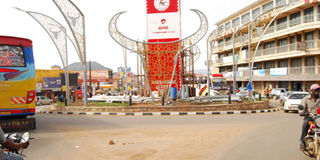Prime
Why Mbarara struggles with high HIV/Aids prevalence

A section of Mbarara city. PHOTO/FILE
As the country joins the rest of the world to commemorate World Aids Day in Rukungiri District today, Mbarara City authorities are struggling to stop the increase of the disease in the area.
According to the Household Child Impact Assessment Report released in 2021, Mbarara City HIV prevalence is at 7.2 percent, higher than the national prevalence rate at 5.8 percent.
The Mbarara branch manager of The Aids Support Organisation (Taso), Mr Wilber Tusiimire, blamed the high prevalence on an increase in the number of women engaged in sex work.
“Mbarara has a high population with growing towns such as Nyihanga, Biharwe, Rubindi, Kijungu and Ruti. There are many small bars in those areas where female sex workers wait on truck drivers along the transit route,” Mr Tusiimire said.
He added that many women are forced to resort to sex trade because they do not have alternative sources of livelihood.
“We shall keep educating people about ABC prevention formula, which emphasises abstinence, being faithful to your pattern or using condoms. Since HIV was discovered, there has been improvement in fighting the virus than in the early days,” he said.
Ms Doreen Kiconco, 19, a peer counsellor at Taso in Mbarara, who was born with HIV, said people no longer care about the scourge because of the availability of treatment.
“Those who are still HIV-negative should protect themselves from contracting the virus by following preventive measures such as using condoms and abstaining from sex,” she said.
Mr Richard Mugisha, the Mbabara deputy city clerk, attributed the increasing prevalence of HIV in the city to economic hardships, especially in families, which he said leads to neglecting children, which forces girls into sex trade for survival.
*Compiled by by Julius Byamukama & Coslin Nakayiira




